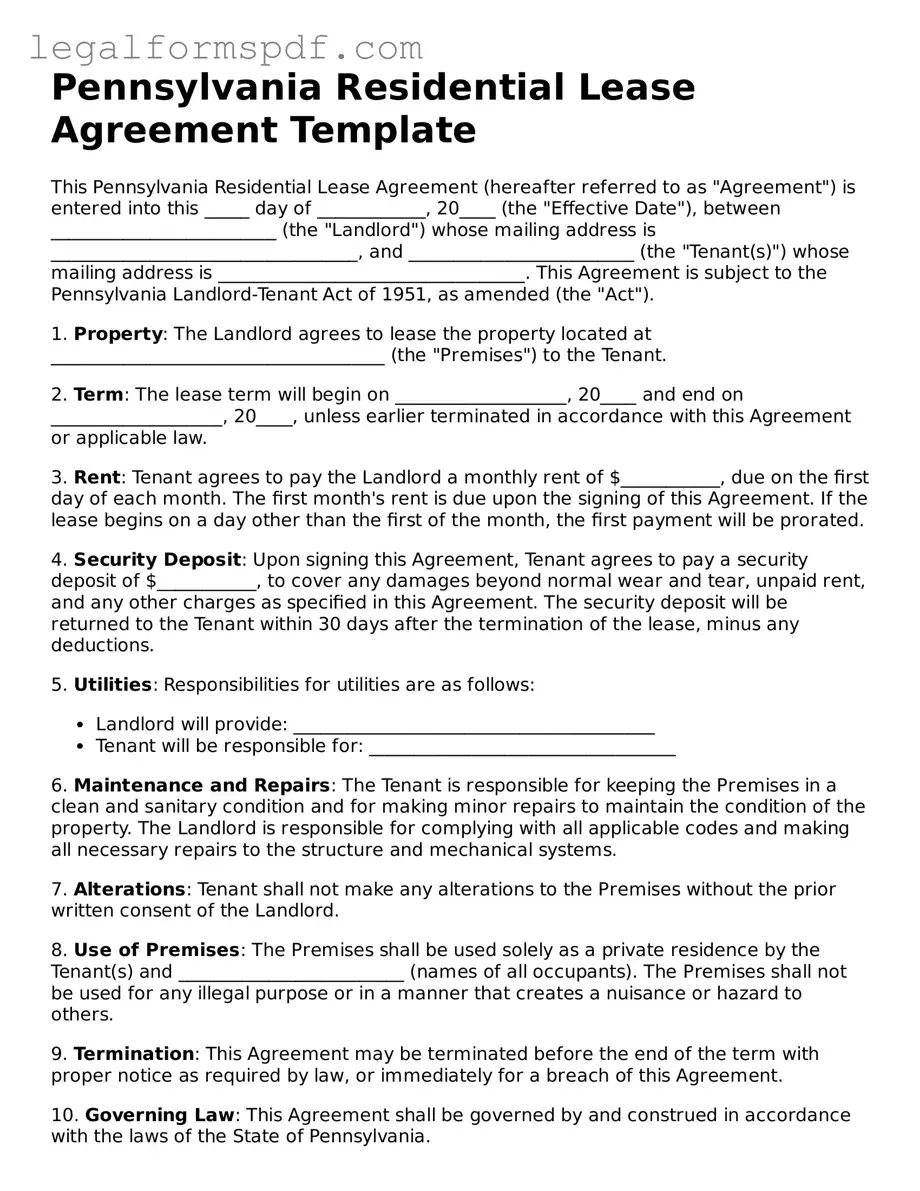Pennsylvania Residential Lease Agreement Template
This Pennsylvania Residential Lease Agreement (hereafter referred to as "Agreement") is entered into this _____ day of ____________, 20____ (the "Effective Date"), between _________________________ (the "Landlord") whose mailing address is __________________________________, and _________________________ (the "Tenant(s)") whose mailing address is __________________________________. This Agreement is subject to the Pennsylvania Landlord-Tenant Act of 1951, as amended (the "Act").
1. Property: The Landlord agrees to lease the property located at _____________________________________ (the "Premises") to the Tenant.
2. Term: The lease term will begin on ___________________, 20____ and end on ___________________, 20____, unless earlier terminated in accordance with this Agreement or applicable law.
3. Rent: Tenant agrees to pay the Landlord a monthly rent of $___________, due on the first day of each month. The first month's rent is due upon the signing of this Agreement. If the lease begins on a day other than the first of the month, the first payment will be prorated.
4. Security Deposit: Upon signing this Agreement, Tenant agrees to pay a security deposit of $___________, to cover any damages beyond normal wear and tear, unpaid rent, and any other charges as specified in this Agreement. The security deposit will be returned to the Tenant within 30 days after the termination of the lease, minus any deductions.
5. Utilities: Responsibilities for utilities are as follows:
- Landlord will provide: ________________________________________
- Tenant will be responsible for: __________________________________
6. Maintenance and Repairs: The Tenant is responsible for keeping the Premises in a clean and sanitary condition and for making minor repairs to maintain the condition of the property. The Landlord is responsible for complying with all applicable codes and making all necessary repairs to the structure and mechanical systems.
7. Alterations: Tenant shall not make any alterations to the Premises without the prior written consent of the Landlord.
8. Use of Premises: The Premises shall be used solely as a private residence by the Tenant(s) and _________________________ (names of all occupants). The Premises shall not be used for any illegal purpose or in a manner that creates a nuisance or hazard to others.
9. Termination: This Agreement may be terminated before the end of the term with proper notice as required by law, or immediately for a breach of this Agreement.
10. Governing Law: This Agreement shall be governed by and construed in accordance with the laws of the State of Pennsylvania.
Signatures
IN WITNESS WHEREOF, the parties have executed this Agreement as of the Effective Date first above written.
Landlord's Signature: _____________________________________ Date: ____________
Tenant's Signature: _____________________________________ Date: ____________
Tenant's Signature: _____________________________________ Date: ____________
(Additional Tenant signatures if applicable)
